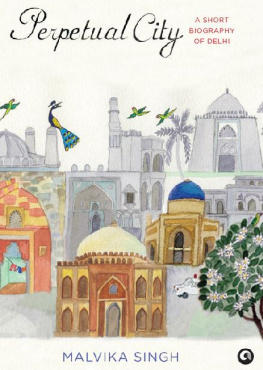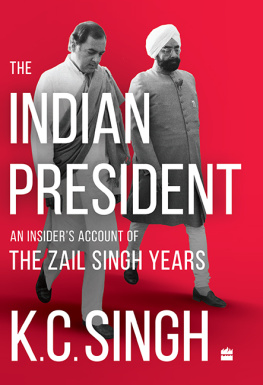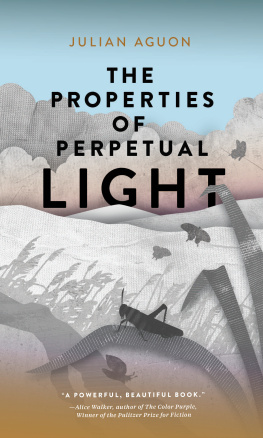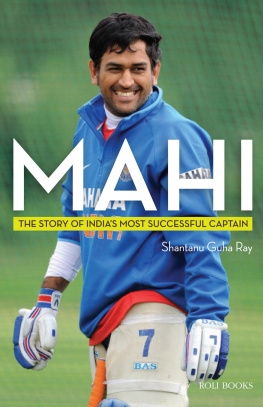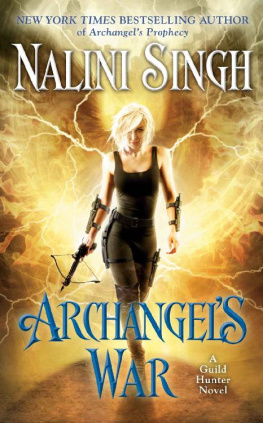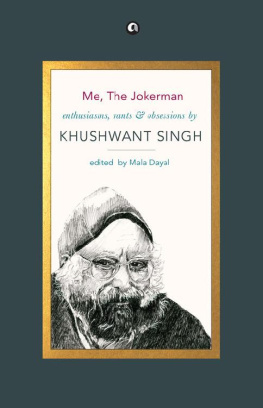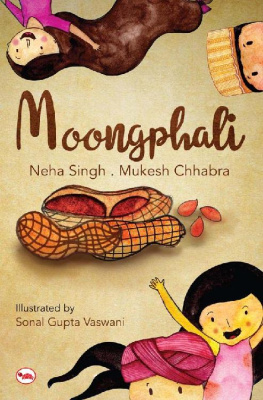Malvika Singh - Perpetual City
Here you can read online Malvika Singh - Perpetual City full text of the book (entire story) in english for free. Download pdf and epub, get meaning, cover and reviews about this ebook. year: 2013, publisher: Aleph Book Company, genre: Home and family. Description of the work, (preface) as well as reviews are available. Best literature library LitArk.com created for fans of good reading and offers a wide selection of genres:
Romance novel
Science fiction
Adventure
Detective
Science
History
Home and family
Prose
Art
Politics
Computer
Non-fiction
Religion
Business
Children
Humor
Choose a favorite category and find really read worthwhile books. Enjoy immersion in the world of imagination, feel the emotions of the characters or learn something new for yourself, make an fascinating discovery.
- Book:Perpetual City
- Author:
- Publisher:Aleph Book Company
- Genre:
- Year:2013
- Rating:3 / 5
- Favourites:Add to favourites
- Your mark:
- 60
- 1
- 2
- 3
- 4
- 5
Perpetual City: summary, description and annotation
We offer to read an annotation, description, summary or preface (depends on what the author of the book "Perpetual City" wrote himself). If you haven't found the necessary information about the book — write in the comments, we will try to find it.
Perpetual City — read online for free the complete book (whole text) full work
Below is the text of the book, divided by pages. System saving the place of the last page read, allows you to conveniently read the book "Perpetual City" online for free, without having to search again every time where you left off. Put a bookmark, and you can go to the page where you finished reading at any time.
Font size:
Interval:
Bookmark:
About the book
Capital to successive empires, and the independent Indian republic, Delhi is finally coming into its own as the nations first city in the twenty-first century. In so doing, it has left behind once and future contenders for the titleBombay, Madras, Calcutta. How did this small settlement, founded in the lee of an ancient range of hills in eighth century by a Tomar Rajput chief called Suraj Pal, become one of the worlds great cities, home to nearly twenty million people, witness to the rise and fall of empires and dynasts and eccentrics as magnificent and notable as the Tomar-Chauhans, the Mamluks, the Khiljis, the Tughlaks, the Sayyids, the Lodis, the Mughals, the Nehrus, the Gandhis and dozens of others too numerous to count? Drawing upon her unparalleled knowledge of the city she has spent most of her life in, Malvika Singh gives us a book that reveals the pith and essence of Delhi through the memorable people who lived (and live) in it, its great buildings, its extraordinary food, its unforgettable music, and the centuries of blood and history that have seeped into every square inch of its soil.
About the author
Daughter of the late Romesh Thapar, Malvika Singh is the publisher of Seminar, a prestigious monthly magazine of ideas, founded in 1959. She has authored several books: Bhutan: Through the Lens of the King; New Delhi: Making of a Capital; Delhi: India in One City; and Snowdons India. She has edited Delhi: The First City; Chennai: A City of Change; Hyderabad: A City of Hope; Kolkata: A Soul City; Lucknow: A City Between Cultures; Mumbai: A City of Dreams; and Freeing the Spirit: Iconic Women of India. She has also worked extensively in theatre and film, and was decorated as a Dame in the civil merit honours list of the King of Spain in 2009.
ALSO BY MALVIKA SINGH
Bhutan: Through the Lens of the King (2012)
New Delhi: Making of a Capital (2011)
Delhi: Red Fort to Raisina (2011)
Delhi: India in One City (2009)
India by Snowdon (2008)
Freeing the Spirit: Iconic Women of India (2006)

ALEPH BOOK COMPANY
An independent publishing firm
promoted by Rupa Publications India
This digital edition published in 2013
First published in India in 2012 by
Aleph Book Company
7/16 Ansari Road, Daryaganj
New Delhi 110 002
Copyright Malvika Singh 2013
No part of this publication may be reproduced, transmitted, or stored in a retrieval system, in any form or by any means, whether electronic, mechanical, print reproduction, recording or otherwise, without the prior permission of Aleph Book Company. Any unauthorized distribution of this e-book may be considered a direct infringement of copyright and those responsible may be liable in law accordingly.
e-ISBN: 978-93-83064-61-8
All rights reserved.
This e-book is sold subject to the condition that it shall not, by way of trade or otherwise, be lent, resold, hired out, or otherwise circulated, without the publishers prior consent, in any form or cover other than that in which it is published.
For
Amrit and Sujan
a sliver of the city they were born in
CONTENTS
If You Tamper with Nature,
Nature Will Destroy You
SECTION I
PERPETUAL CITY
PERPETUAL CITY
Of all the worlds great cities washed by the tides of history, and there are only a select few of these, in which power and pomp have been concentrated for centuries, there are none which are quite like Delhi. No other city, despite repeated attempts to destroy it, or neglect it, continues to grow and reinvent itself from age to age. Capital to multiple empires, each more glorious than the one which preceded it, and now, the largest urban agglomeration in a nation awkwardly coming into its own, it looks set to reinvent itself once morethis time as a mega-city for the twenty-first century. Unfortunately, Im not certain that the newest avatar of this city, founded in the lee of an ancient range of hills in northern India, is going to be as appealing as those that preceded it.
As a result of decades of neglect and mismanagement, of unthinking land use, and most tragically, the toxic-transformation of the holy river Jamuna (on whose banks it sprawls), polluted stream, the Delhi of our childrens children is likely to be an unholy, abysmal mess. Pause for a moment and imagine with me if you can, a city with the clear and languid waters of the Jamuna meandering through her centre, much like the Seine or the Danube or the Thames through their cities. Imagine how such a tangible reality could have restored the dil of the city, made her heart come alive. Yet that was not to be. Instead, what we have is a classic urban nightmare that has closed off everything that is good and beautiful about this extraordinary cityits monuments and parks, its heady aroma of flowering trees, its abundant birds and wildlife, its incredible, unparalleled mix of history with its unusual, syncretic religiosity. In all my wanderings around the world, with the exception of Rome, I have not come across as many hidden architectural gems as there are in Dilli and its greater capital area. Some make profound and dramatic statements establishing their place in the sun, others sit apart, isolated but with pride, comfortable in their individual skins. At its most resplendent, parts of the city merge into a single, diverse and historic cityscape that encompasses time immemorial, through a subtle, delicate, nuanced tapestry of cultures. But with an astounding lack of planning, greed and incompetence, the authorities have done their best to reduce what could have been a wondrous city to an urban catastrophe. Almost, but not quite, as we shall see in the course of the book.
I moved to Delhi from Bombay in the 1950s, and was immediately struck by the broad avenues and wide open spaces of Delhi, punctuated with weathered monuments, their aging patina reflecting the dancing rays of early morning and evening light. It was all larger than life, powerful and fragile at the same moment.
I thought then, as I do now, that Delhi was about those who rule us, and we the ruled, who are at their call and mercy. It was (and is) a city of them and us, while Bombay was, in comparison, equal and cosmopolitan, all-embracing, and did not exude that alienating sense of absolute power. From Purana Qila to Red Fort and on to Rashtrapati Bhavan, the imposing walled-in palaces of the emperors of yore as well as the leaders of today, the many Diwan-e-Khas, were, and continue to be, secluded, protected abodes, ivory towers segregated from the people at large.
The beauty and scale of the architecture of different periods stretching over thousands of years, telling the many fables of a time past, reiterating the great information technology, the phenomenal skills of the brain and hand, that has been the intrinsic strength, the real DNA, of this Indian subcontinent for aeons, boggled the mind as I began to venture into the citys extraordinary spaces, trying to navigate its infinite nuances. For me, this layered material heritage that lay scattered around my new habitat, was my first, conscious confrontation with the meaning of civilization. As I grow older, I too, have moved into another phase of exploring life, past and present, in this city, and find that I have just about scratched the surface of an incredibly complex historical reality. I have realized, over the decades, the special privilege of being able to put down my roots in a city where history becomes magical, and stories take on political and philosophical meanings. The decoding never ends in this perpetual city, which seems to have emerged full blown at some remote point in the past, and which seems to be constantly evolving into something new, a city that will forever remain an exciting, infinitely mysterious and intricate entity, yielding up its secrets slowly, always holding out, the excitement of the unknown that is just waiting to be discovered.
Next pageFont size:
Interval:
Bookmark:
Similar books «Perpetual City»
Look at similar books to Perpetual City. We have selected literature similar in name and meaning in the hope of providing readers with more options to find new, interesting, not yet read works.
Discussion, reviews of the book Perpetual City and just readers' own opinions. Leave your comments, write what you think about the work, its meaning or the main characters. Specify what exactly you liked and what you didn't like, and why you think so.

